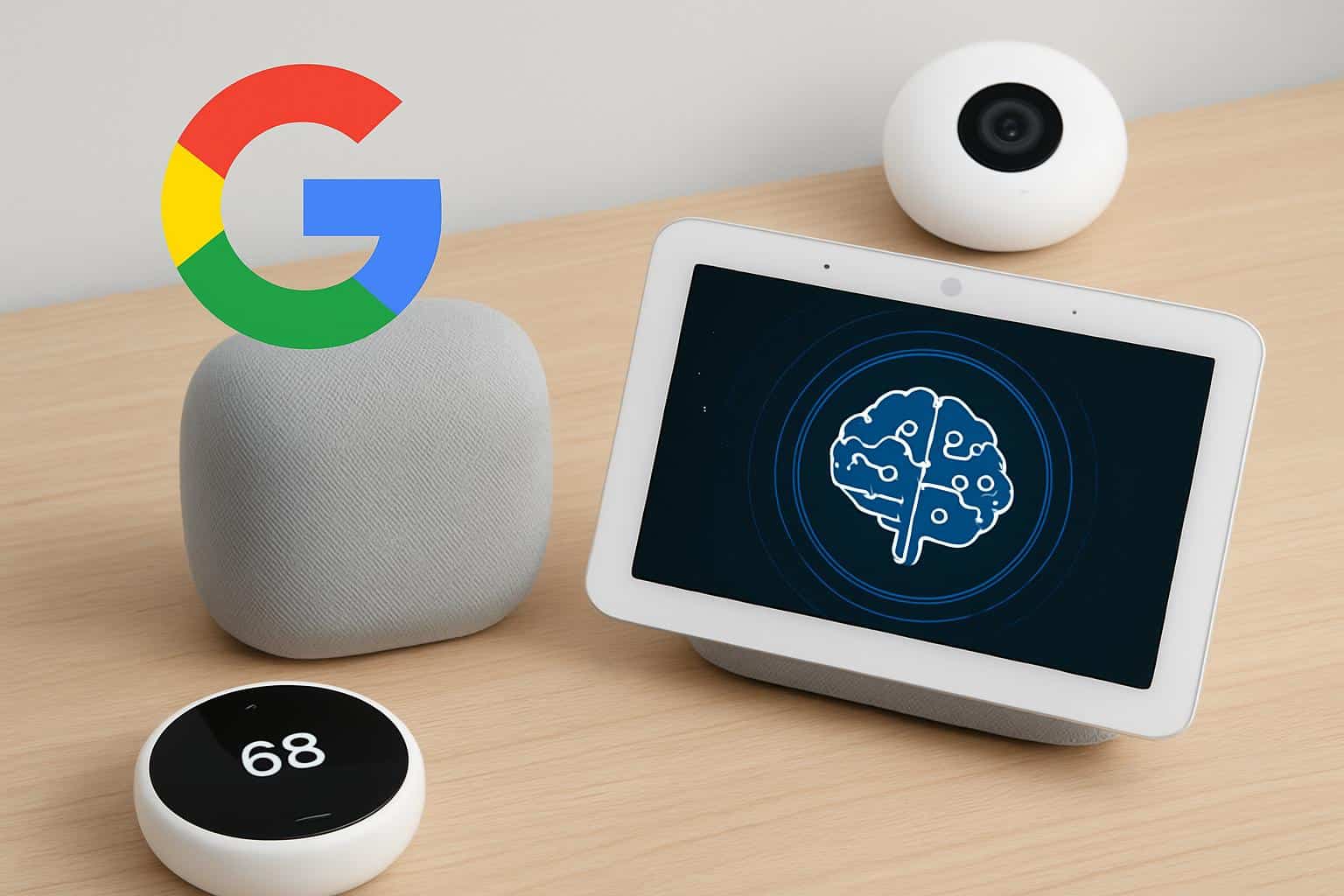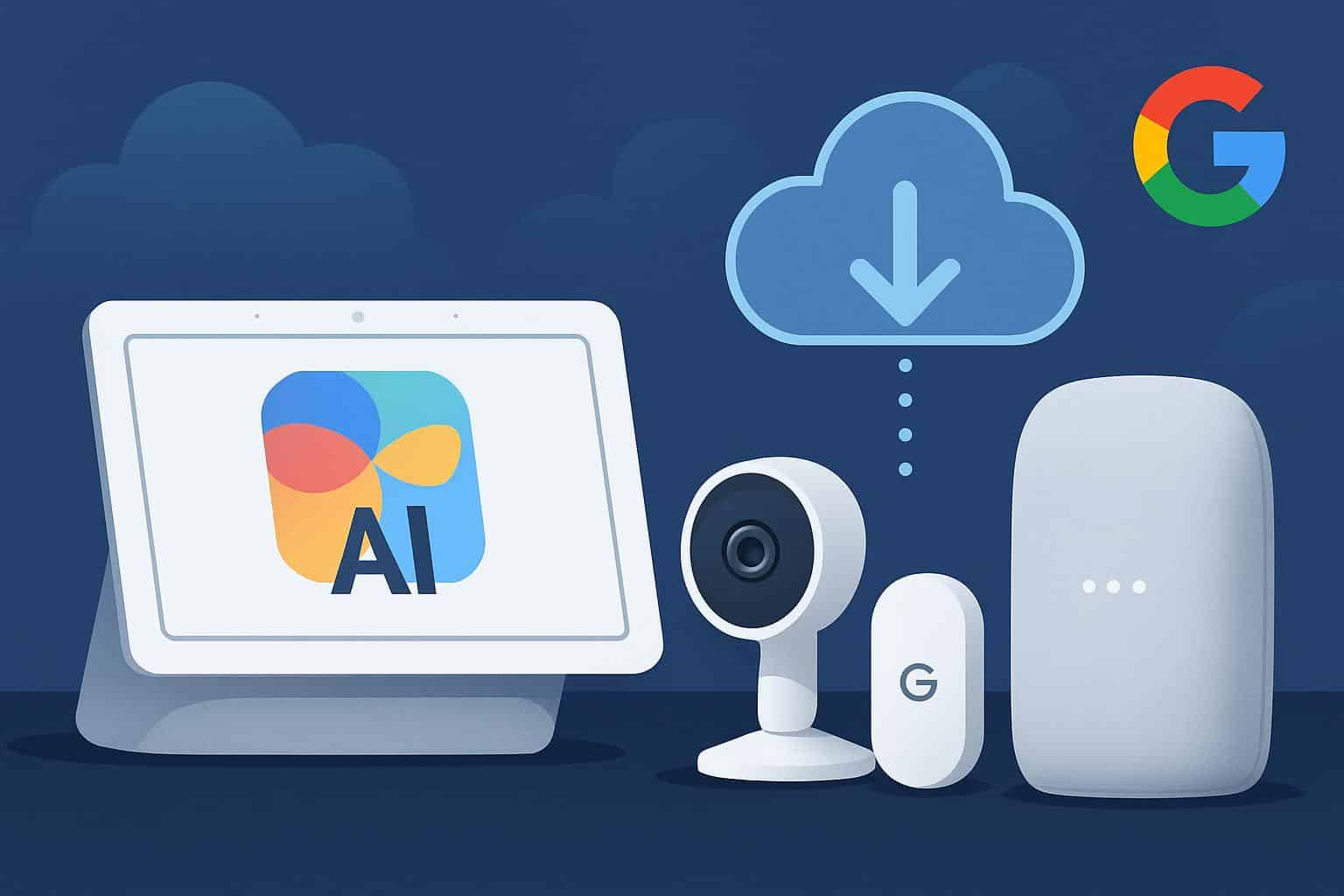Google has brought out a huge smart home upgrade that will make some long-in-the-tooth Nest gear feel fresh again. The company is replacing Google Assistant with Gemini for Home on a wide range of compatible devices, providing a way to interact in more natural conversations, smarter notifications and AI-driven summaries without needing any new hardware. In the case of most households, the fundamental improvements come at no additional cost.
What the upgrade actually does for Google Home devices
The headline update is that Gemini—Google’s generative AI—is now driving the Google Home experience on compatible devices. Which is to say, your cameras and doorbells, displays and speakers can understand more specific queries. And respond in casual voice — everyday language. Instead of relying on strict directives, you can use more nuanced prompts like “When did the children get home?” or “Show me when the garage opened after midnight” and it will fetch the appropriate results.
- What the upgrade actually does for Google Home devices
- What’s included for Nest cameras, doorbells and displays
- The free features versus the paid Home Premium tiers
- Life in the age of new AI with Ask Home and summaries
- Why aging smart homes need long-term AI support now
- New hardware in the mix to complement the AI features
- How to get ready and enable Gemini for Home features

Notifications get an upgrade, too. Alerts are also getting richer descriptions generated by the AI, so they can include a Who or What and give you a zoomed-in preview where applicable, cutting down on guesswork. There’s also a new “Home Brief” to sum up the day: Here were package deliveries, doors opened, familiar faces seen — so you don’t have to scrub through timeline footage.
Gemini makes it even easier to build automations. Instead of creating if-this-then-that recipes, you can declare an intention — “Help me feel safer at night” — and allow the system to recommend routines that dim lights, turn on others, switch off cameras and modify notifications. On a small number of devices, Gemini Live facilitates more natural low-latency back-and-forth conversations, which introduces a cadence to voice interactions that mimics human timing.
What’s included for Nest cameras, doorbells and displays
Google says that nearly all Nest products released in the last 10 years will be compatible with these changes. That brings the fresh look to a lot of older speakers and displays, including Google Home, Nest Mini, Nest Audio, Nest Hub (both first and second gen) and the Nest Hub Max, as well as legacy cameras and doorbells such as the indoor/outdoor versions of the Nest Cam or certain models of the Nest Doorbell (wired or battery).
As a practical matter, the mix of tools varies by device class; cameras benefit most from the new AI descriptions and “Ask Home” queries for video, for example, whereas speakers and displays excel with continued conversation controls and Gemini Live on select models. And the most important takeaway is longevity: Your existing gear inherits functions that would normally seem proprietary to fresh-from-the-factory gizmos.
The free features versus the paid Home Premium tiers
The underlying transition from Google Assistant to Gemini for Home is free on compatible devices. For more power users, Google has a new Home Premium tier with two plans that resemble the existing Nest Aware model: a Standard plan for $10/month and an Advanced one for $20/month, which also includes Google One benefits.
The Standard plan includes:
- Gemini Live on supported hardware
- More automations
- Extended event video history
- Intelligent alerts (including familiar faces where available)
- Advanced detections like packages, garage door open sounds, smoke alarm sounds, and CO alarm sounds
Advanced includes:

- “Ask Home” feature for video history
- Wider AI notifications and scene descriptions
- The Home Brief daily summary
- 60 days of event history
- 24/7 continuous video history (for compatible cameras)
- Google One benefits
For those who are already a subscriber of Google AI Pro or Google AI Ultra, there’s no extra charge for the new Google Home feature package: you subscribe for power like it was Soylent Green.
Life in the age of new AI with Ask Home and summaries
With “Ask Home,” you might say, “What ate my plants?” and Gemini will surface camera clips that match — without you setting up complicated filters. You can also say, “Show me when the front door was opened after 10 p.m. this week,” or “How many packages were delivered today?” and receive direct responses with accompanying clips.
Home Brief turns the day into a summary, good for parents, pet owners or anyone waiting on deliveries. For automations, that’s more likely to produce a schedule that turns on lights and tightens security when your home goes quiet at night with prompts such as: “Make it look like somebody is home when the house is empty.”
Why aging smart homes need long-term AI support now
Software longevity is more and more the difference between a smart home that grows with you and a drawer full of half-daunted gadgets. Research firm Deloitte finds the average U.S. home now has more than a dozen connected devices and data released by Parks Associates reveals that more than half of U.S. broadband subscribers in one way or another own a smart-home product. By upgrading older equipment with better AI and automation, free of charge, we prevent e-waste and add value for millions of users.
It also adds safety and convenience without running new wires. Better alerts reduce notification fatigue, while conversational controls make it easy to use even for others in the household (like roommates or kids).
New hardware in the mix to complement the AI features
In addition to the software updates, Google unveiled new hardware aimed to take advantage of some of those AI features: a new $99 Google Home Speaker with 360-degree audio; next-generation Nest Cams (indoor or outdoor) with 2K resolution and taller field of view; and a new Nest Doorbell featuring a 1:1 aspect ratio for head-to-toe framing and clearer notification previews. Through a retail partnership, the budget-friendly onn. models — which include a low-cost indoor camera and video doorbell — hope to make affordable security available to more people.
How to get ready and enable Gemini for Home features
Update the Google Home app, make sure your Nest products have received firmware updates and check notification settings for richer alerts. If you rely on video history, compare Home Premium levels and verify which cameras allow for 24/7 recording. Privacy controls remain in the Google Home app — use them to adjust who can save familiar faces, what gets saved and how AI features work across the people in your household.
The bottom line: This is a rare, across-the-board upgrade that makes older Nest devices more conversational, more helpful and more secure — without asking you to buy new gear.

